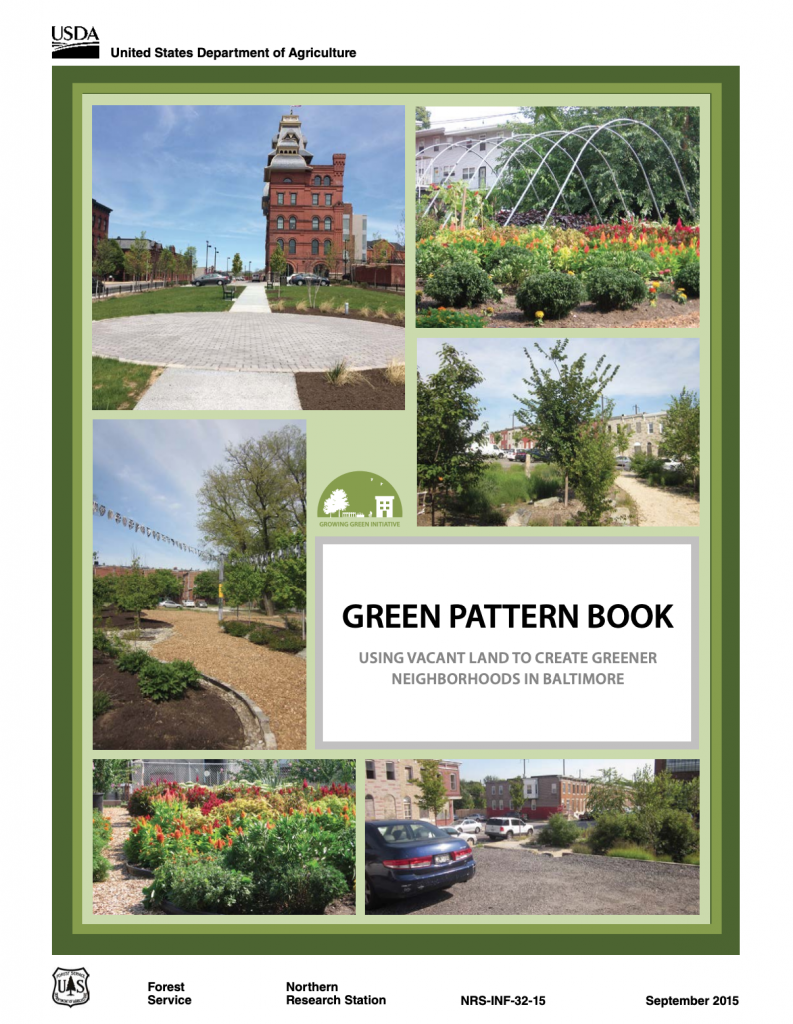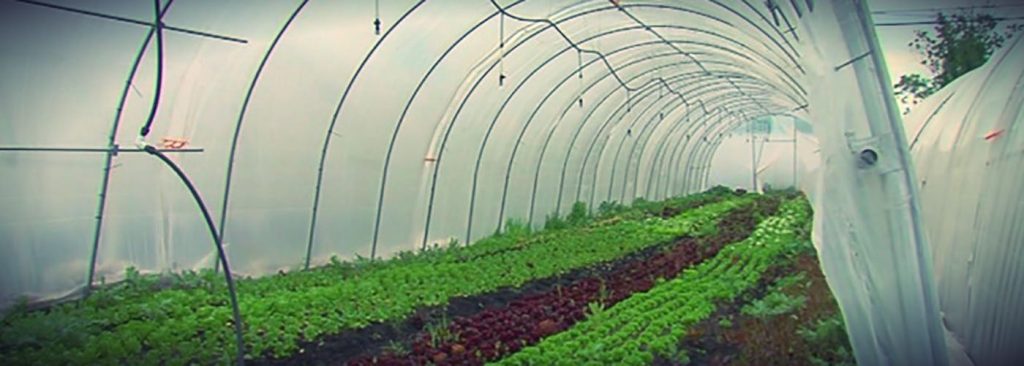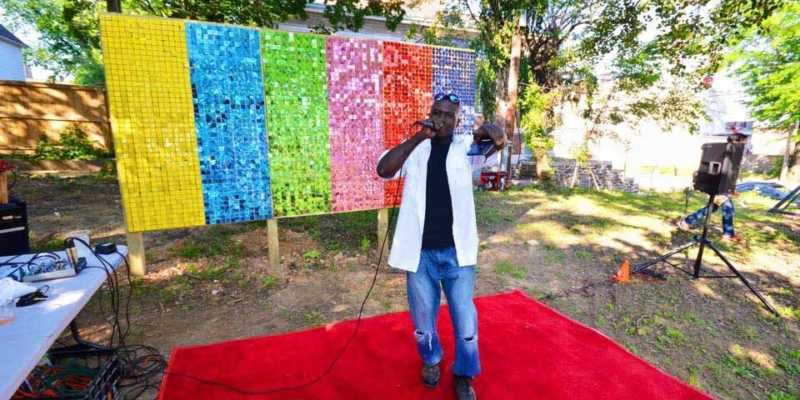City: Baltimore
Country / US State / US Territory: Maryland
Type of Solution: Green Infrastructure
Climate Impact: Extreme Temperatures and Urban Heat Island Effect; Air Quality; Extreme Precipitation and Flooding
Social Value Created: Social Cohesion; Educational and Career Development Opportunities; Food Security and Nutrition; Water Quality; Community Engagement; Arts and Culture
The City of Baltimore launched its Growing Green Initiative (GGI) in 2014. The program works to repurpose vacant lots into community assets, such as green infrastructure, community gardens and urban farms, recreational space, and open space for community gatherings. Residents have the ability to adopt a lot. Thus far, the city has successfully repurposed nearly 800 vacant lots.
Green infrastructure helps to manage stormwater by increasing the amount of pervious surfaces for on-site water treatment, reducing flooding and thereby improving community health and safety. Lots are also used to increase the tree canopy and increase the urban forest, helping to mitigate the urban heat island effect, improve air quality, and act as a buffer along railways and highways.
Some lots have been converted into community gardens and urban farms to help combat Baltimore’s food deserts, improving food security and nutrition, as well as increase social cohesion. Other lots have been converted into community gathering spaces and play spaces, improving social cohesion and increasing physical activity of children, improving children’s health.
One vacant lot was transformed into a sculpture park on Homestead Street in East Baltimore, contributing to the community’s arts and culture. Employment and job training opportunities are also created by this program for landscape maintenance and planting, stormwater facility development, urban farming, and food systems.
In 2016, the City of Baltimore partnered with the United States Environmental Protection Agency and Chesapeake Bay Trust to hold a competition, the Growing Green Design Competition: Vacant Lots Transformed. The competition engaged community groups, design firms, non-profit, and private partners to develop ideas for transforming vacant lots. Seven projects were awarded $300,000 to design and construct their ideas.



Sources:
Dillin, A. L. (June 20, 2017). Vacant lot transforms into sculpture park in East Baltimore. Baltimore Magazine. Retrieved from https://www.baltimoremagazine.com/2017/6/20/vacant-lot-transforms-into-sculpture-park-in-east-baltimore.
The Climate Adaptation Clearinghouse. (May, 2014). Baltimore, Maryland Growing Green Initiative. Retrieved from http://www.adaptationclearinghouse.org/resources/baltimore-maryland-growing-green-initiative.html.
United States Forest Service. (2015). Green pattern book: using vacant land to create greener neighborhoods in Baltimore. Retrieved from https://www.baltimoresustainability.org/wp-content/uploads/2015/12/Green_Pattern_Book.pdf.

